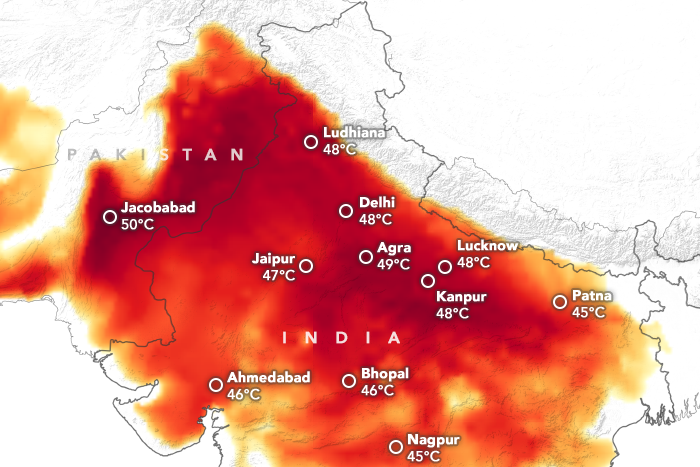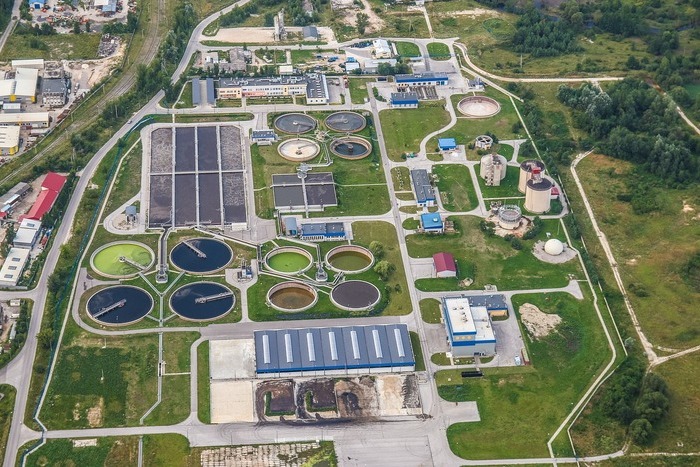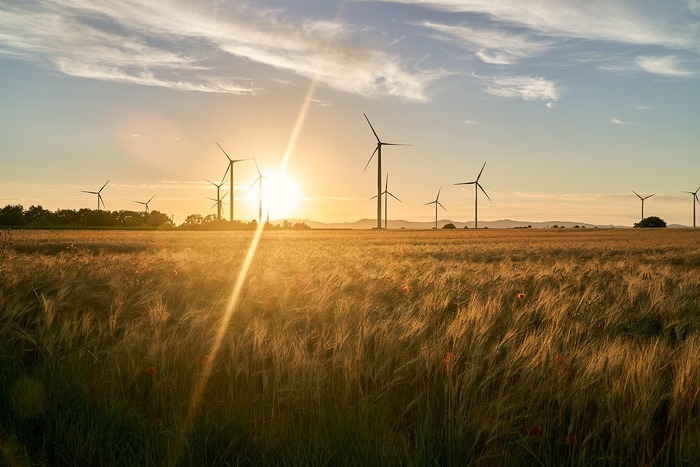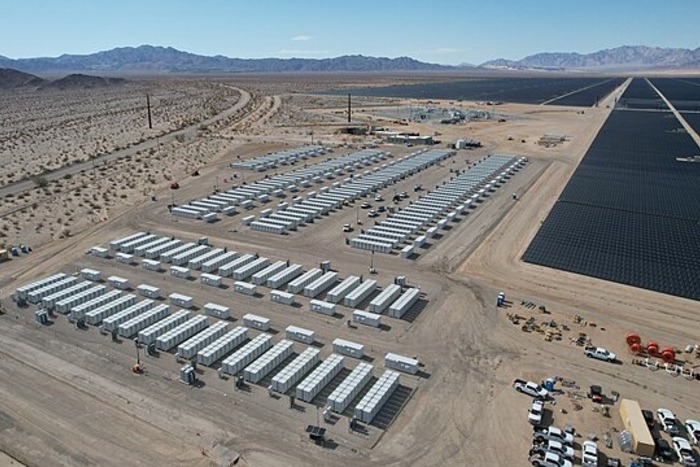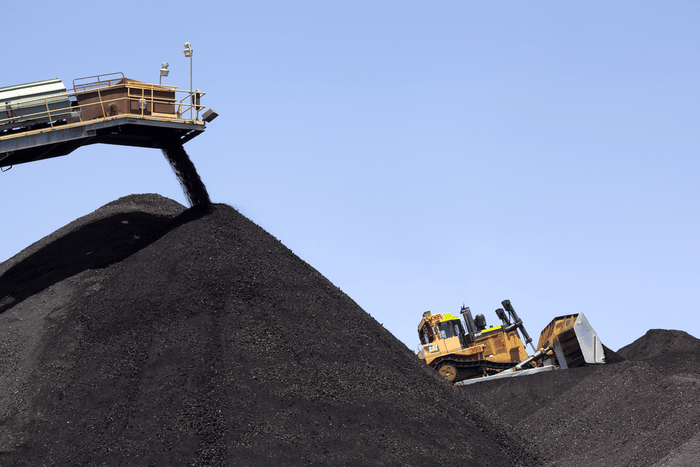
Creative: Riddhi Tandon
Can biochar be India’s missing link to carbon capture?
With abundant biomass and lower production costs, India and the Global South are emerging as powerhouses in the biochar carbon market — but credibility, equity, and scale are still in question
Can biochar, a form of charcoal, provide a viable means of carbon capture to help India meet its emission goals? The experience of the pastoral nomads of Kachchh in Gujarat suggests that the answer could be yes.
In agricultural circles, biochar has been described as ‘black gold’ due to its dramatic beneficial effects on soils and plant growth. It is a carbon-rich material formed by slow pyrolysis— heating biomass under an oxygen-limited environment so that it does not fully combust. Charcoal is biochar produced from woody biomass. While charcoal from woody biomass is used as fuel, biochar is designed for soil application. Crucially, biochar is highly resistant to decomposition, enabling long-term carbon sequestration.
At a time when India faces growing pressure to cut emissions without stalling its agricultural economy, biochar offers a rare triple advantage — locking away carbon dioxide, restoring degraded soils, and creating new income streams for rural communities. As demand for credible carbon removal solutions rises worldwide, countries in the Global South like India are increasingly being seen as vital players, not only because of their abundant biomass resources, but also because lower production costs and direct reliance on carbon credits make biochar projects more financially viable here than in the Global North.
Challenges, however, remain around scalability, certification costs, ensuring consistent biochar quality, and integrating small producers into complex carbon markets. Even so, as India seeks climate solutions rooted in its rural economy, biochar’s growing role in carbon removal presents a promising — although imperfect — path forward. Although biochar producers are optimistic about the growth of the artisan biochar production sector, the absence of a clear national biochar policy has created a great deal of uncertainty. That the government is interested in biochar as a way of carbon sequestration was clear from a seminar on biochar, which was organised by the National Institute of Small and Medium enterprises in 2023 in collaboration with the International Biochar Initiative.
How biochar captures carbon — and rebuilds soil
The Kachchh nomads were faced with an ecological challenge. They found that grasslands on which their livestock foraged were rapidly being swallowed up by South American mesquite (prosopis juliflora). To reclaim the grasslands, the herders began chopping down the mesquite and pyrolyzing it into charcoal.
Initially, the resulting charcoal was sold mainly to ceramic, tile, limestone, and brick industries in Gujarat and Rajasthan, and exported to Middle Eastern and African markets for domestic and restaurant use.
But a couple of years ago — with the help of non-profit Sahjeevan — the Kachchh nomads began to capitalise on earning carbon credits. Instead of selling the charcoal as fuel, the nomads began ploughing it back into the grassland in the form known as biochar. Like charcoal, biochar, too, contains 70-80% of pure carbon. When put back into the soil and not burnt, it amounts to carbon capture, or what is described as carbon dioxide removal (CDR). By following this process, they cleared 11 sq km of the invasive mesquite, and earned as much as $180,000 by selling the carbon credits generated from biochar production. “It’s a win-win situation,” said Sandeep Virmani, founder president of Sahjeevan who has been working in the region for three decades. Virmani said that an added bonus for the herders was that the biochar improved soil quality, and enhanced its water-retention capacity. This helped raise productivity in the Banni grasslands of Kachchh by 55-75%.
Entering the carbon removal market
This success positioned the Kachchh nomads within the fast-growing carbon market, a key component in the process to achieve net zero. The global voluntary carbon market (VCM) rose to roughly $2 billion dollars in 2022, shrank and then again recovered strongly to reach $4.5 billion in 2025.
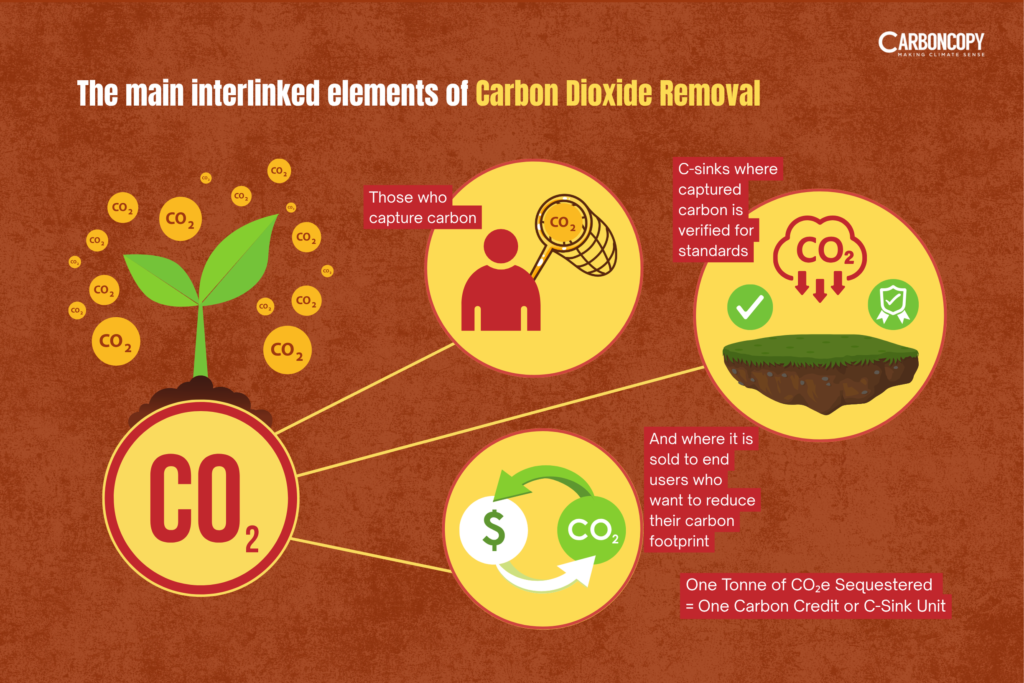
The main interlinked elements of the carbon dioxide removal (CDR) market are those who capture carbon, the C-sinks where captured carbon is verified for standards and registered as credits and sold to end users who want to reduce their carbon footprint, either to meet compliance obligations or voluntary commitments. One tonne of CO₂e sequestered is equal to one carbon credit or C-sink unit. Standardisation involves the complete and accurate tracking of feedstock to ensure that only acceptable ones like crop residue, the use of endorsed technology, that the biochar produced has more than 60% carbon and lastly that it has been mixed with compost and applied to the soil, not burnt as fuel.
In Kachchh, the process is straightforward – mesquite first captures carbon dioxide from the air through photosynthesis, then the biomass from its wood is pyrolyzed to biochar. This, in turn, is mixed with compost and put back into the soil as fertiliser. Most of the organic carbon stays on in the soil for more than 1,000 years, thus permanently removing GHG carbon dioxide from the atmosphere.
Overcoming certification challenges
Certification to obtain the carbon credits, however, remains a major hurdle for each of the 2,500 biochar producing, herder families. With fees as high as ₹6 lakh, access to credit certification platforms is beyond the reach of small biochar producers, who also have to bear the cost of producing the biochar.
To bridge this gap, Gurgaon-based Varaha Earth trained the herders to follow certification norms, document production through its geo-tagged mobile app, and register the biochar through the Global Biochar Registry. Varaha then shares the collected data with the Global Biochar Registry, which authenticates the carbon credits. Kaushal Bisht, marketing head of Varaha explained, “Datasets were collected that obtained insights into whether that land and green practices were in place.”
Validation of the key characteristics of farms and forests is done by identifying them through remote sensing models using observations from satellite imagery, light detection and ranging (LiDAR) and widefield plot network, he said. “High quality carbon credit generation through removed or sequestered greenhouse gas emissions are further converted into high quality carbon credits via third party validation, verification and issuance through Verra and other credible agencies,” said Bisht. The credits are then purchased by institutional buyers interested in offsetting their GHG emissions.
Madhur Jain, co-founder and CEO of Varaha Earth put it clearly thus: “If corn shank or cob (a biomass) is burnt it results in carbon dioxide emissions; if it is left in the open it decomposes into methane. Either way, it’s a problem. But if it is converted into biochar it can be used to enhance soil and, more importantly, the carbon remains in the soil.”
Although the soil enhancement qualities of biochar and its use as an alternative fuel has been known for long, its carbon-sink potential was formally recognised only in 2019 when Finland-based Puro.earth began issuing carbon credits for it. Its certification of biochar guaranteed verifiable and trackable storage of carbon. With this certification biochar entered the carbon market.
Soon, Switzerland-based Ithaka developed its own standards based on which the European Biochar Certification (EBC) followed. In 2021, EBC, Ithaka Institute and private group of certifiers Easy Cert set up Carbon Standards International (CSI) as the nodal C-sink body. Other certification platforms include Verra, the biggest and Gold Standard.
Creating access for small producers
The creation of the Global Artisan Biochar C-Sink in 2022 revolutionised access for small producers. It opened up the potential to use huge amounts of farm residue as feedstock for biochar production in countries like India, and at the same time generate carbon credits.
CSI has estimated that the potential of agricultural waste produced in tropical countries can help remove and sequester at least 800 billion tonnes of CO₂e by the end of the century. In India alone, an estimated 228 tonnes of surplus farm waste is produced every year and about half of it is burnt to clear the fields for the next crop, resulting in severe air pollution. Heavy fines ranging from ₹5,000-30,000 are imposed on farmers in Punjab for burning rice and wheat stalks.
Soon after the Artisan Biochar C-Sink came into existence, companies like Varaha Earth and Pune-based Varhad capitalised on the opportunity of connecting smallholder farmers to the C-Sink. The companies began operations in 2023 to align the farmers producing biochar with the new guidelines made up of a multilayered system of digital monitoring, reporting and verification (dMRV) designed for artisan biochar producers though they adopted different models to go about it.
The use of proper manufacturing and data recording methods enabled the Kachchh nomads to get the carbon removal credits registered on the Global C-sink Registry. The dMRV allows tracking of the biochar right from its origin in biomass feedstock, its quantity and quality and right to the time that it is mixed with compost and ploughed back into the soil and not used as fuel. This is backed up by geolocation and time stamp of measurement. The Varaha data smart phone application is CSI endorsed and has an interface with the Global C-Sink Registry.
Income from trading the credits is shared with the nomads, through Sahjeevan’s help. The Kachchh nomads have not only demonstrated the importance of technology in building kontiki kilns and flame curtain pyrolisers, and connecting through mobile apps, but also shown that biochar produced using low-cost equipment has enough carbon to qualify as carbon capture. Scientific studies dispel doubts about the quality of the biochar produced in kon-tiki kilns, proving that the biochar produced compares favourably with industrial production in terms of the minimum acceptable pure carbon content.
Varhad, which works with a network of farmers cooperatives and producer organisations, has trained 30 kontiki operators who move within a 15 km radius with the kilns and pyrolyze cotton and pigeon pea crop residue into biochar. They also trade 120 kg packs of biochar processed with compost and of the right pH value in return for a tonne of biomass from farmers. Most plants require soils that are slightly acidic or neutral.
Varhad’s chief of staff, Kriti Soni, said her company manufactures the kontiki kilns used for the pyrolysis. “The biochar we produce from the high carbon cotton and pigeon pea stalks enable the capture of 2.6 kg of CO₂e for every kilo of biochar,” said Soni.
Global South: A key source of growth for biochar carbon credits
The biochar market is growing quickly along with the CDR market. While biochar credits formed around 6% of the CDR market in 2023, the sector grew rapidly — from 20.7 kilotonnes of removals in 2020 to 4.5 million tonnes in 2023, with a near-500% CAGR. Driving this market is the fact that more than half the world’s biggest companies have set net-zero targets, says a 2024 EY report.
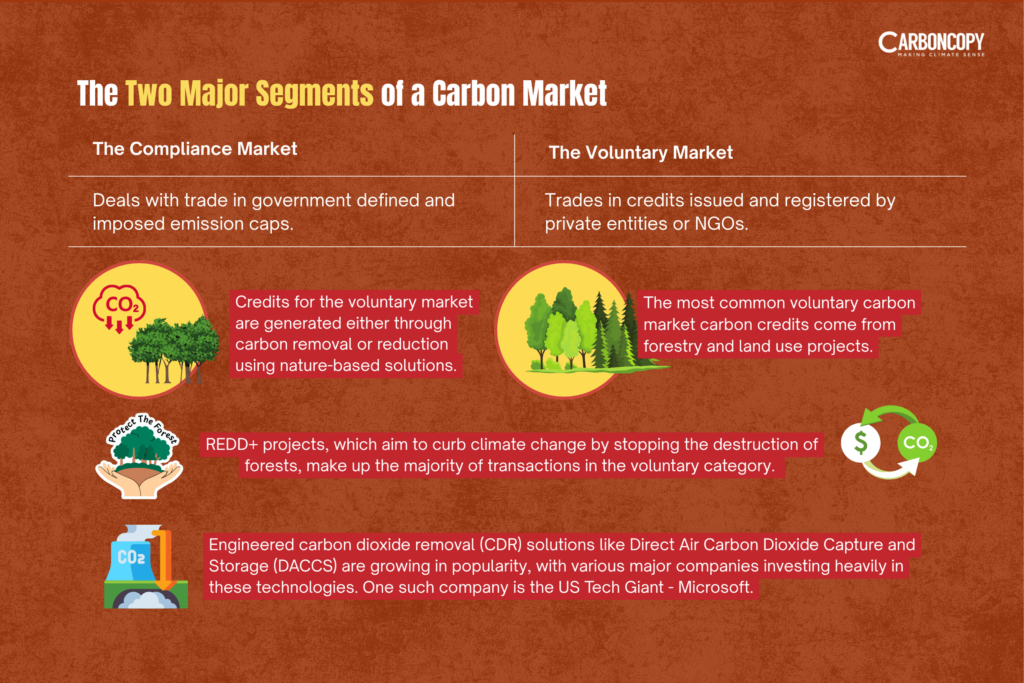
The carbon market is made up of two major segments – the compliance and voluntary. The compliance market deals with trade in government defined and imposed emission caps while the voluntary market trades in credits issued and registered by private entities or NGOs.
Credits for the voluntary market are generated either through carbon removal — CDR, or reduction using nature-based solutions. The most common VCM carbon credits come from forestry and land use projects. REDD+ projects, which aim to curb climate change by stopping the destruction of forests, make up the majority of transactions in this category. Engineered carbon dioxide removal (CDR) solutions like Direct Air Carbon Dioxide Capture and Storage (DACCS) are growing in popularity, with various major companies investing heavily in these technologies. Microsoft, in particular, is a key driver of CDR technology growth, with the U.S. tech giant purchasing millions of CDR credits to offset its carbon emissions in recent years.
In its report, CDR.fyi pointed out that before 2023, North American and European producers dominated the biochar carbon removal market in tonnes sold and delivered. Sold refers to the amount that buyers have contracted to buy while delivered refers to the amount that has been actually supplied till date. However, since the beginning of 2023, there has been a marked increase in biochar carbon removal production in Global South countries.
Now, some of the companies may not have their headquarters in the Global South, but operate in the region. Carboneers, for example, is headquartered in the US, but operates in Northeast India.
According to the location of production, in the period January 2023 to March 2024, six of the top 10 producers were from the Global South. The biggest was Exomad Green from Bolivia, followed by Brazil’s Aperam BioEnergia, and the India-based Carboneers.
In 2025, Varaha became the seventh-biggest producer of biochar in the world with 122,130 tonnes of CO₂e sold and 20,130 tonnes delivered. Exomad, Aperam and Carboneers have retained places. Incidentally, India is among the biggest exporters of carbon credits obtained from the voluntary market, having exported more than 700 million cumulatively since 2003.
According to CDR.fyi, global biochar production in 2023 was 352,304 tonnes that equates to 650,000 tonnes of CO₂e. However, of this only 107,000 tonnes of biochar credits were delivered, mostly because the big biochar producers of Europe and North America could not qualify for credits as they failed to meet the additionality condition.
The Global South is emerging as a key source of growth in the biochar carbon credits due to their low overall production costs and their lack of reliance on the legacy revenue streams of their European and North American counterparts. Unlike producers in Europe and North America, who treat carbon credits as an add-on, many new facilities in Africa, South America, and Asia depend on them as their primary source of income.
Nevertheless, the voluntary carbon market has faced credibility issues, notably with standards body Verra being accused of inflating claims. As a result, initiatives like the Integrity Council for the Voluntary Carbon Market (ICVCM) and Voluntary Carbon Market Integrity Initiative (VCMI) were launched to enhance transparency and trust.
Some, however, have raised serious objections to all the claims made on behalf of the beneficial effects of biochar. Questions have been raised by Biofuelwatch on three grounds – firstly on the claim that biochar carbon remains sequestered in the soil for a thousand years, saying that this has not been conclusively established. The second objection is with regard to the impact that the addition of biochar may have on the earth’s reflectivity that itself has implications for global warming. The third serious objection raised has been with regard to the deleterious rather than beneficial effect biochar would have on the soil. There is evidence, says Biofuelwatch in a 2011 paper that addition of biochar may actually induce the oxidation of other forms of carbon in the soil to carbon dioxide through microbial activity.
Notwithstanding these initial hiccups, the voluntary carbon market and the role played by biochar is growing (as the data shows) and the drawbacks that have surfaced should be looked into to help devise a more credible system. For Global South countries such as India, biochar production holds out the promise of a three-fold advantage — removal of GHG carbon dioxide helping in meeting net-zero commitments, reduction of air pollution from crop residue burning and soil improvement leading to higher agricultural yields.
Heatwaves across North India. Photo: Wikimedia Commons
Severe heat grips NW and east India
Summer heat returned with Northwest India and East India battling extreme temperatures. New Delhi touched 43.8°C, Bhatinda 47.6°C, Ganganagar 47.4°C, Amritsar 44.8°C, Rohtak 46.1°C, and Lucknow 42.7°C, HT reported. In east India, Patna recorded 40.4°C, while Kolkata recorded 36.3°C with over 60% relative humidity (RH), the newspaper said. Heat wave conditions are likely to continue over Northwest India with severe heat wave conditions at isolated pockets over West Rajasthan till June 12, the outlet said.
PTI reported that India’s heatwaves are worsening but no one knows how many are dying. There’s no reliable data on heat deaths in India as reporting systems are not uniformly strong across the country, said Health Ministry Advisor Soumya Swaminathan while speaking at India Heat Summit 2025.
Floods, landslides kill 46 in Northeast India; flash flood kills 6 in Meghalaya
Unprecedented rainfall gripped Northeast India causing floods and landslides, with several villages submerged and roads cut off. “As of June 5, 46 people had lost their lives, across the seven states in the region,” reported Mongabay India.
Guwahati recorded 111 mm rainfall between May 30 and May 31 (city’s highest May rainfall ever). Silchar recorded 415.8 mm rainfall in 24 hours on May 31, breaking its 132-year-old record of 290.3 mm over 24 hours in 1893, the news site reported. Sohra and Mawsynrum in Meghalaya saw more than 470 mm rainfall on May 31 while Tezpur and North Lakhimpur in Assam saw over 150 mm rainfall during the same period.
Assam State Disaster Management Authority (ASDMA) said 2,37,783 villages are affected in 19 districts with 41,415 people taking shelter in 385 relief camps across the state. In Manipur 165,000 people remain affected by the deluge, particularly in Imphal’s eastern part, the outlet reported.
Heavy rains on May 30-31, 2025, battered Meghalaya, impacting 86 villages in 10 districts, DTE reported, six people died, including two children struck by lightning in Kentapara. Districts of Ri Bhoi, East Khasi Hills, and West Garo Hills were among the hardest hit, with flash floods, landslides, and storm damage displacing thousands.
‘Unusually cooler’ May records highest rainfall since 1901
May this year was “unusually cooler” with average daytime temperatures recording the seventh lowest for the month since 1901 and the lowest in the past four years, according to the India Meteorological Department (IMD), reported HT. May 2025 recorded the 59th lowest average minimum temperatures for the month since 1901.
The newspaper said the weather office highlighted that the average rainfall across the country in May, recorded at 126.7 mm (106.4% of the long period average), was the highest for the month since 1901, when the temperatures first began recording. This May also recorded the highest number of heavy (64.5 to 115.5 mm) rain events at 1,053; very heavy (115.6 to 204.5 mm) rain events at 262; and extremely heavy (more than 204.5 mm) rain events at 39, in the past five years, barring 2021, when the number of extremely heavy rain events was higher at 42.
According to the newspaper more Western Disturbances (WDs) impacted northern India. The outlet explained: “May has been unusual for northwest India, particularly because of persistence of slow-moving western disturbances over the region. WDs are cyclones originating in the Mediterranean Sea which move east and bring winter rain to northwest India. The impact of WDs is felt normally during December, January and February, but this year they have been active till late May. A persistence of WDs is normally deemed unfavourable for the monsoon, according to experts.”
Expect a hotter and wetter monsoon across South Asia and Tibet this year: ICIMOD
Temperatures will be around 2°C hotter than average in addition to above-average rainfall this summer monsoon, in the entire Hindu Kush Himalayan (HKH) region warned a new analysis of global and national meteorological agencies’ data released by the International Centre for Integrated Mountain Development (ICIMOD) on June 11, 2025, DTE reported. Temperature rise, combined with wetter monsoons, can also raise the risk of heat stress and waterborne disease outbreaks, such as dengue, according to the report.
Temperature rise was predicted for nearly all countries across the HKH region including Afghanistan, Bangladesh, Bhutan, Tibet (China), Myanmar, Nepal and Pakistan, but more worrying for experts is the probability of a wetter monsoon across the region.
India, Nepal, and Pakistan as well as China’s Tibetan Autonomous Region are expected to receive above-average rainfall, as per the report. “Strong probability that southwest monsoon seasonal precipitation will be above normal,” the report said about India. The same is the forecast for Nepal.
The report sounded a call to the region to brace “for a possible rise in climate risks and impacts”, given that close to three-quarters (72.5 per cent) of all floods from 1980 to 2024 have occurred during the summer monsoon season. “Rising temperatures and more extreme rain raise the risk of water-induced disasters such as floods, landslides, and debris flows, and have longer-term impacts on glaciers, snow reserves, and permafrost. Lower rainfall, meanwhile, particularly in water-stressed countries such as Afghanistan, may pose risks to food and water security in a country with already extraordinarily high levels of malnutrition,” the report continued.
Heatwave days to double in Delhi, Chennai & these 6 Indian cities by 2030
Mumbai, Chennai, Delhi, Surat, Thane, Hyderabad, Patna and Bhubaneswar may witness a two-fold increase in heatwave days by 2030, according to a new study by development consulting firm IPE Global and GIS technology provider Esri India, DTE reported.
The report titled Weathering the Storm: Managing Monsoons in a Warming Climate offers a district-level assessment of the correlation between extreme heat and erratic rainfall in India.
Incessant and erratic rainfall will become more frequent in 8 out of 10 districts in India, the report noted.
1.8 billion people in South Asia face extreme heat risks by 2030: World Bank report
According to a new World Bank research, nearly 1.8 billion people in South Asia will face extreme heat risks by 2030, but market failures and income constraints are forcing them to rely on basic adaptation measures, reported HT. South Asia is the most climate-vulnerable region among emerging market and developing economies, the WB report said. Temperature projections show that by 2030, approximately 89% of South Asia’s population will face extreme heat risks. In 2021, an average of six hours a day were too hot to safely work outside in Bangladesh, India, Pakistan and Sri Lanka. That is expected to rise to seven or eight hours a day by 2050. More than 60% of households and firms surveyed have experienced extreme weather in the last five years, and more than 75% expect it for the next decade.
World’s oceans at record high temperatures as CO2 levels rise
The global ocean temperatures reached their second-highest level on record for May, “capping an alarming two-year streak of rapid warming and fuelling concerns about the seas’ ability to absorb rising levels of carbon dioxide”, reported FT. The newspaper cited the European Union’s climate change service, Corpenicus data stating that “the global average sea surface temperature in May was 20.79C, 0.14C below the record in the same month in 2024”. The outlet explained that the level of CO2 in the atmosphere peaked globally at the mean of 426 parts per million (ppm) in March, up from 423ppm a year ago, and surpassed 430ppm at the Mauna Loa Observatory in Hawaii. The greenhouse gas concentration has risen from about 300ppm over the past 60 years, FT report said.
Marine heatwave found to have engulfed area of ocean five times the size of Australia
The Guardian reported that an area five times the size of Australia was hit by a marine heatwave in 2024. A new paper from the World Meteorological Organization (WMO) found the heatwave impacted almost 40m sq kilometres of ocean around south-east Asia and the Pacific, The outlet noted. “WMO scientists said the record heat – on land and in the ocean – was mostly driven by the climate crisis and coincided with a string of extreme weather events, from deadly landslides in the Philippines to floods in Australia and rapid glacier loss in Indonesia,” the article said, adding that the region was 0.48°C hotter in 2024, than the average recorded between 1991 and 2020.
Canadian wildfire smoke causes air quality hazards in the US and reaches Europe
According to a Le Monde report, smoke from Canadian wildfires has continued to hamper air quality in the US Midwest, as well as causing “huge plumes of smoke” to reach Europe. The wildfires have forced the evacuation of more than 26,000 people, and continued their “stubborn spread”, “with heavy smoke choking millions of Canadians and Americans and reaching as far away as Europe”, the newspaper said.
Photo: UN Climate Change
India calls for more climate contributions ahead of Bonn climate talks
In a “succinct and strongly-worded” submission to UN Climate Change ahead of the Bonn climate talks that begin on June 16, India said “without sufficient climate finance, even proposed nationally determined contributions (NDCs) will not materialise, leave alone any ambitious future [pledges]”, reported HT. The outlet said India reiterated its objection to the climate finance outcome at COP29 in Baku.
Citing India’s submissions the report said “Baku to Belém Roadmap…is an opportunity to put the financial discussion on the right track in accordance with Article 9.1 of Paris Agreement”. India said that the roadmap must “recognise the country-led nature of climate action” and warned that “overleveraging for climate initiatives through excessive borrowing poses risks to the country’s fiscal stability”.
NASA scientists anxious as Trump budget seeks to dismantle top US climate lab
According to CNN, NASA scientists are in a “state of anxious limbo” after the Trump administration proposed a budget that would eliminate one of the US’ top climate labs – the NASA Goddard Institute for Space Studies (GISS) – as a standalone entity. The news channel said the proposal would “move some of the lab’s functions into a broader environmental modelling effort across the agency”. Career specialists are now working remotely, awaiting details and even more unsure about their future at the lab after they were kicked out of their longtime home in New York City, the outlet said. Closing the lab for good could jeopardise its value and the country’s leadership role in global climate science, the article noted. The GISS lab has around 125 scientists, the article explains, and is known for “tracking global temperatures, with GISS’ records serving as one of the independent checks on other labs around the world monitoring global warming”, CNN reported.
World Bank lifts ban on funding nuclear energy in boost to industry
The World Bank is lifting its ban on financing nuclear energy, in a “policy shift aimed at accelerating development of the low-emissions technology to meet surging electricity demand in the developing world”, the Financial Times reported. The newspaper cited the bank’s president’s email to staff that it would “begin to re-enter the nuclear energy space”, with plans to partner with the International Atomic Energy Agency. The email continued: “We will support efforts to extend the life of existing reactors in countries that already have them, and help support grid upgrades and related infrastructure.”. The New York Times. Reported that the decades-long ban was formally brought in in 2013, but the last time the bank funded a nuclear power project was in Italy in 1959
Germany’s new energy minister says RE targets overambitious, plans gas expansion
At the annual congress of the German Association of Energy and Water Industries (BDEW) in Berlin, Katherina Reiche, Germany’s new economy and energy minister, has emphasised that “energy policy is much more than climate policy…it’s a security issue”, reported Carbon Brief. The outlet noted that the minister sees the previous government’s energy approach as “too rigid and narrowly defined”, advocating instead for a “realistic, innovation-driven and reliable course with clear targets”.
According to the outlet, Reiche echoed concerns from energy companies such as EnBW, RWE, and E.On about “overly ambitious” renewable targets, warning that the “rapid expansion of renewable energy alone is not enough to make the energy transition a success”, as it could lead to building expensive and unnecessary grid infrastructure. She also reiterated plans to expand gas capacity and battery storage, asserting: “We need flexibility. We need storage. We need controllable power plants.” According to Reuters, Reiche announced a government analysis of electricity demand, supply security and infrastructure readiness, calling for a “quick reality check” of the energy transition.
Global energy investment set to hit record $3.3tn in 2025: IEA
An increase in clean-energy spending is expected to drive a record $3.3 trillion in global energy investment in 2025, according to a new report from the International Energy Agency (IEA), reported Reuters. The IEA report said clean-energy technologies are set to attract $2.2 billion in investment, “despite economic uncertainty and geopolitical tensions.” This is twice the amount of investment expected for fossil fuels, the article noted.
Deep-sea geoengineering set for scrutiny, as ocean treaty approval nears
A new treaty to protect oceans, now close to taking effect, would make it harder to remove greenhouse gases from the atmosphere through controversial geoengineering techniques like sinking seaweed and iron filings into the sea or storing carbon dioxide in seabed rocks, reported Climate Home citing experts.
The outlet said after approvals at a UN ocean summit in the French city of Nice this week, 50 countries and the European Union have now ratified a pact known as Biodiversity Beyond National Jurisdiction or the High Seas Treaty. The article continued: once ratified by 10 more states, it will come into force 120 days later. The treaty would give governments the power to create protected areas in international waters – the parts of the ocean more than 370 km from land which make up the majority of the world’s sea. These Marine Protected Areas could restrict environmentally damaging activities like fishing boats dragging nets for their catches.
Photo: Pixabay
Green court trashes Uttar Pradesh govt report on sewage treatment plants and waste management over huge gaps
India’s green court, The National Green Tribunal (NGT) said the Uttar Pradesh government’s report on the status of Sewage Treatment Plants (STPs) and Sewage Waste Management (SWM) submitted to the tribunal has huge gaps. The court handed a prescribed format to the government to fill the gaps and ordered it to submit missing details by July 28, the date of next hearing, HT reported.
The court said the UP government has not clarified how against disclosure of 95% waste processing facilities (19,014 TDP or tons per day), the quantity of segregated waste is 74% (14,884 TPD). It continued to say: no clarification was given on the operation of waste processing plants without authorisation under the SWM Rules. The report discloses figures of waste generation in 762 local bodies, but does not reveal the actual waste processed by urban local bodies. The report says there has been 100% remediation of legacy waste at 60 sites but no material has been placed on record in support of this claim. Figures disclosed indicate 60 sites remediated and only 26 sites are left with legacy waste. Since, in other ULBs, waste processing facilities do not exist, specific disclosure of legacy waste in such ULBs should be pointed out. No disclosure has been made on the operational status of waste-to-energy plants, the newspaper pointed out.
India drafts solar waste rules as capacity crosses 100 GW, eyes 6 lakh tonne disposal by 2040
India is projected to generate over 34,600 tonnes of solar photovoltaic (PV) waste by 2030, according to draft guidelines released by the Central Pollution Control Board (CPCB), which has proposed a detailed framework for handling end-of-life solar modules, panels, and cells, ET reported.
The draft guidelines outline roles and responsibilities of manufacturers, bulk consumers, dismantlers, and recyclers under the existing E-Waste (Management) Rules, 2022.
India had installed over 73 GW of solar capacity as of March 2023, and the country’s cumulative PV waste generation is expected to increase significantly from approximately 100 tonnes in 2020 to 600,000 tonnes by 2040. The waste volume is estimated to reach 34,600 tonnes by 2030.
The guidelines stated, “Solar PV waste consists of various materials such as glass, aluminum, silicon, plastics and heavy metals like lead, cadmium and antimony. Improper handling or disposal can pose serious risks to human health and the environment.”
Under the proposed rules, producers and bulk consumers must ensure end-of-life management of solar equipment. They are required to channel waste only through registered dismantlers and recyclers. The CPCB has emphasized that Extended Producer Responsibility (EPR) will apply to producers involved in manufacturing, importing, or selling solar PV modules or panels in India.
Trump’s EPA announces major rollbacks to power plant pollution limits
US President Donald Trump’s proposed rollbacks of regulatory laws are set to allow US power plants to pollute nearby communities and the wider world with more unhealthy air toxins and an unlimited amount of planet-heating gases, reported the Guardian.
The outlet said the US Environmental Protection Agency (EPA) unveiled a plan that would repeal a landmark climate rule that aims to mostly eliminate greenhouse gases from power plants by the 2030s and would, separately, weaken another regulation that restricts power plants’ release of hazardous air pollutants such as mercury.
Pfas detected in US beers in new study, raising safety concerns
Cancerous “forever chemicals” in beer? All but one of 23 beers in the US sampled for toxic Per- and polyfluoroalkyl substances (Pfas) contained the compounds, new research found, raising safety questions about one of the world’s most popular beverages, the Guardian reported. The researchers checked craft beer from multiple states, major domestic brands, and several international labels.
The scientists compared the measurements to Pfas levels in the county water supply where each was bottled, revealing a “strong correlation” that suggests contaminated water is driving most of the problem. The levels were often above some drinking water limits for Pfas.
Pfas are a class of about 15,000 compounds most frequently used to make products water-, stain- and grease-resistant. They have been linked to cancer, birth defects, decreased immunity, high cholesterol, kidney disease and a range of other serious health problems. They are dubbed “forever chemicals” because they do not naturally break down in the environment.
Scientists warn against attempts to change definition of ‘forever chemicals’
Internationally renowned scientists issued a warning against attempts to narrow the definition of “forever chemicals” in what they describe as a politically or economically motivated effort to weaken regulation of the potentially harmful chemicals, according to the Guardian. Per- and polyfluoroalkyl substances (Pfas) are a large group of synthetic chemicals used for their oil-, water- and stain-resistant properties in a range of consumer and industrial products from waterproof clothing and non-stick cookware to firefighting foams and electronics, the newspaper explained.
Their molecular structure makes them resistant to degradation, earning them the nickname “forever chemicals”. In the past few years there has been growing awareness of the problems associated with Pfas, resulting in the banning of certain forms.
A group of scientists are now raising the alarm about efforts by groups in the International Union of Pure and Applied Chemistry (IUpac), to narrow the current international definition of Pfas in ways that could exclude certain chemical subgroups. The report noted that last year IUpac launched a project aimed at providing “a rigorous definition. But in a paper published this week in Environmental Science & Technology Letters, the group of scientists defends the current definition, calling it “scientifically grounded, unambiguous, and well-suited to identify these chemicals”. The effort to change the definition is “politically and/or economically, rather than scientifically, motivated”, the authors write.The authors warn: “An IUpac-endorsed and potentially narrower Pfas definition could confer undue legitimacy … and influence regulatory bodies and others to adopt less protective policies.”
Photo: Pixabay
India’s total renewable energy capacity grows 17% to 227 GW in May: Pralhad Joshi
India’s total renewable energy capacity grew 17.13% to 226.74 gigawatts (GW) in May, Union Minister Pralhad Joshi said, according to ET.
The renewable energy capacity surged 17.13% year-on-year to 226.74 GW in May from 193.58 GW in the same month last year, as per the data shared by the minister in his post. Of the total, solar power capacity expanded 31.49 per cent to 110.83 GW from 84.28 GW in May 2024. Wind capacity witnessed a rise of 10.49% to 51.29 GW against 46.42 GW last year.
ALMM-Authorized Solar Module Manufacturing Capacity Rises by 2.98 GW
The Centre updated the Approved List of Models and Manufacturers (ALMM) by adding 2,988 MW of solar module manufacturing capacity. The cumulative module manufacturing capacity has now reached 90,959 MW, after the latest additions, Mercom reported. Reliance Industries is the new entry in the list with a capacity of 1,716 MW. Avaada Electro increased its capacity by adding 1,272 MW. SASA Energy’s manufacturing capacity was revised from 100 MW to 98 MW, indicating a reduction of 2 MW in the list.
The total number of module manufacturers has now increased to 105. In May this year, MNRE updated the ALMM by adding 8,653 MW of solar module manufacturing capacity.
Chinese Wind, Solar Projects Shut Amid Shift to Market‐Based Pricing
A number of wind and solar power projects have been halted across multiple Chinese regions “just months after China unveiled a new policy to push such renewable energy sources” to market-based pricing, according to business news outlet Yicai. The outlet quoted an unnamed source from a “state-owned new energy investment company” saying the rates of return for some projects are “no longer economically feasible” under the new policy.
Trump’s tax bill to reduce solar, wind, storage additions 10% by 2035
According to a new research cited by Bloomberg, President Trump’s new tax bill will cause “wind, solar and storage capacity overall to drop by 10% by 2035 relative to a baseline scenario.” The research said the “bill would also result in 3.8m more tonnes of carbon emissions from the country’s power sector by 2050. The impact on wind power would be most severe, with new capacity shrinking by 35% and no offshore wind additions after 2028. Solar and energy storage capacity stand to fare better, falling 5% and 7%, respectively.”
Photo: Wikimedia Commons
India announces new $631m funding scheme to build battery energy storage, inter-state transmission charges waived
India announced a ₹54 billion ($631 million) viability gap funding scheme to build 30 gigawatt-hours (GWh) of new battery energy storage systems (BESS) to “ensure round-the-clock renewable energy capacities”. This will be in addition to the already existing incentive worth ₹3,700 crore under which 13.2 GWh of BESS is currently under implementation, reported Moneycontrol. The scheme is targeted at 15 states, which will receive allocations of 25GWh, and 5GWh to the state-run National Thermal Power Corporation (NTPC), the report said.
The outlet added that to push developers to build energy storage systems as urgently as renewable projects, the Union government on June 10 also approved a 100% waiver on Inter-State Transmission (ISTS) charges for BESS projects that are co-located or built within renewable energy projects and are commissioned by June 30, 2028.
China, US reach a ‘done deal’, Trump says, pending sign-off by President Xi Jinping
China and the US struck a deal that includes rare earth exports from China and Chinese students attending colleges in America, President Donald Trump said, reported South China Morning Post. “Our deal with China is done, subject to final approval with President Xi [Jinping] and me,” Trump posted on social media, as negotiating teams from the two countries concluded two days of talks in London.
“Full magnets, and any necessary rare earths, will be supplied, up front, by China. Likewise, we will provide to China what was agreed to, including Chinese students using our colleges and universities (which has always been good with me!),” Trump wrote.
Tesla stock plunges, wiping $150 billion off market, as Musk feuds with Trump
The ‘bubbling conflict’ between Elon Musk and US President Donald Trump erupted after Musk publicly slammed the Republican’s domestic policy bill, which caused EV manufacturer Tesla’s shares to plunge, ‘wiping out $150 billion off’ the market valuation. The NYT reported that, “The shares fell 14.3% for the day as Mr Musk, Tesla’s chief executive, ramped up his public criticism of the House Republican domestic policy bill, calling it an ‘abomination’. The tumble – the company’s worst day since March and its second worst since 2020 – wiped out about $150bn from Tesla’s market valuation.” Responding to Musk’s criticism of the bill on his social messaging service Truth Social, Trump posted: “I took away his EV mandate that forced everyone to buy electric cars that nobody else wanted (that he knew for months I was going to do!), and he just went CRAZY!,” the newspaper said.
Associated Press reported that after Musk said that Trump wouldn’t have gotten elected without his help, Trump implied that he may turn the federal government against his companies, including Tesla and SpaceX. Trump posted: “The easiest way to save money in our budget, billions and billions of dollars, is to terminate Elon’s governmental subsidies and contracts.”
Reuters warned Tesla could face a technology setback, stating: “openly feuding with Trump could pose multiple hurdles for Tesla and the rest of Musk’s sprawling business empire”, particularly as “the US transportation department regulates vehicle design standards” and “would have a big say” in whether Tesla can mass produce self-driving cars.
India, Central Asia to conduct joint rare earth exploration amid alarm over China curbs
India and central Asian countries expressed interest in joint rare earth exploration, amid global alarm over China’s decision to curb exports of rare earth alloys, mixtures and magnets, spooking industries ranging from automobiles and clean energy to defence, Reuters reported. India Kazakhstan, Kyrgyzstan, Tajikistan, Turkmenistan, and Uzbekistan also called upon “relevant authorities” for an early meeting of the India-Central Asia Rare Earth Forum, which last met in September.
Rare earths are a group of 17 elements whose most key uses include creation of magnets that power motion for cars, cellphones, missiles, and other electronics. China mines about 60% of the world’s rare earths and makes 90% of rare earth magnets, but announced export restrictions on these in April as part of its sweeping response to U.S. President Donald Trump’s tariffs.
Tech giants’ carbon emissions up 150% with AI growth
The operational emissions of four big AI-focused technology companies increased by an average of 150% from 2020 to 2023. Amazon, Microsoft, Alphabet, and Meta experienced a surge in their global indirect emissions due to the substantial energy demands of powering the data centres, reported Energy Monitor citing a new report by the World Benchmarking Alliance (WBA) and the International Telecommunication Union (ITU), a UN agency for digital technologies.
According to the findings, in 2023, Amazon recorded the highest increase in operational carbon emissions at 182% compared to three years prior, with Microsoft following at a 155% rise. Meta’s emissions grew by 145%, while Alphabet saw an increase of 138% in the same period.
Electricity consumption by data centres, crucial for AI operations, surged by an average of 12% annually from 2017 to 2023, outpacing global electricity growth fourfold.
The report highlighted that with rising investments in AI, the highest-emitting AI systems could potentially produce up to 102.6 million tonnes of CO₂ equivalent (tCO₂e) annually.
Meanwhile, AP reported that Amazon plans to spend $20 billion on data centres in Pennsylvania, including one next to a nuclear power plant.
Photo: Wikimedia Commons
India’s swelling coal stockpiles test state-owned mining giant CIL
India’s state-owned mining giant Coal India Ltd. is sitting on record-high inventories. The miner has an unsold inventory of more than 100 million tonnes since the start of the fiscal year, reported Bloomberg. Meanwhile, coal stockpiles at power stations, the company’s biggest customers, are up almost a third from a year earlier at more than 58 million tonnes, the highest level in records going back 17 years, the outlet noted.
The report pointed out that an early onset of monsoon rains and frequent showers in parts of the country have kept India’s electricity demand in check and coal stockpiles high. Combined with increased competition from cleaner sources of electricity, as well as other miners, Coal India is unlikely to return to the massive profit margins it enjoyed just a few years ago.
The outlet said India’s coal-fired generation fell 6% from a year earlier in the first two months of this fiscal year. Meanwhile, peak electricity consumption this year is over 10% short of a projection in February, and more than 5% below last year’s maximum. Unless heat waves this month push power use drastically higher, it would be the first annual decline in at least two decades, the report said.
India’s $80 billion coal-power boom is running short of water
India plans to spend nearly $80 billion on water-hungry coal plants by 2031 to power growing industries like data center operations; the vast majority of these new projects are planned for India’s driest areas, Reuters reported citing a power ministry document.
The article said the thermal expansion likely portended future conflict between industry and residents over limited water resources. Thirty-seven of the 44 new projects named in the undated power ministry shortlist of future operations are located in areas that the government classifies as either suffering from water scarcity or stress. NTPC, which says it draws 98.5% of its water from water-stressed areas, is involved in nine of them.
The article noted that since 2014, India has lost 60.33 billion units of coal-power generation across the country — equivalent to 19 days of coal-power supply at June 2025 levels — because water shortages force plants to suspend generation, according to federal data. Among the facilities that have struggled with shortages is the 2,920 MW Chandrapur Super Thermal Power Station, one of India’s largest.
India’s natural gas consumption to more than double by 2040: PNGRB study
India’s natural gas consumption may rise by 60% by 2030 and more than double by 2040, as its use as CNG in automobiles and for cooking and industrial purposes increases, according to a study by oil regulator PNGRB, reported ET.
The newspaper added that the consumption of natural gas, which is used to produce electricity, make fertiliser or turned into CNG for running automobiles and piped to household kitchens for cooking, is expected to rise from 187 million standard cubic metres per day in 2023-24 to 297 mmscmd by 2030 under ‘Good-to-Go’ scenario, the study by Petroleum and Natural Gas Regulatory Board (PNGRB) said.
UK’s fossil fuel import deal: Centrica strikes £20 billion deal to import gas from Norway until 2035
Financial Times reported that the owner of British Gas has struck a £20 billion deal to buy gas from Norway over the coming decade, a “sign that the UK will remain reliant on fossil-fuel imports as it winds down North Sea exploration”. Centrica will buy 5 billion cubic metres of gas from Norway’s state-owned Equinor each year from this October until 2035, this is “equivalent to about 9% of the UK’s gas demands last year and enough to supply 5 million homes”, the newspaper reported adding that the deal is about half the amount it has bought annually over the past three years, but around the same as an earlier deal in 2015.
Germany is once again generating more electricity from coal and gas
Due to the “low” wind levels in the first quarter of 2025, electricity generation from renewables in Germany decreased by 17% for the first time in two years, while generation from fossil-fuel sources increased significantly, reported Carbon Brief, citing the outlet Frankfurter Allgemeine Zeitung (FAZ). However, the outlet added that, despite the overall decline in renewables, wind power remained the largest source of electricity generation, with a share of almost 28% – just ahead of coal at 27%. The report said, gas accounted for nearly 21% – “significantly more than the previous year” – while electricity generation from solar power rose “by a good third”, reaching a 9.2% share of the total electricity mix, the outlet explains.
China’s approvals of coal power plants grow after 2024 decline
China approved 11 gigawatts (GW) of new coal power plants in the first quarter of 2025, exceeding the 10 GW approved in the first half of last year, Reuters reported citing Greenpeace research. Gao Yuhe of Greenpeace, warned that “approving a new wave of large-scale coal projects risks creating overcapacity, stranded assets and higher transition costs”.
Last year, Chinese approvals of new coal-fired power capacity fell 41.5% year-on-year to 62.24 GW, the first annual decline since 2021. The new data suggested approvals are tracking higher this year. While all the approved projects may not be built, the growing pipeline signals a continued reliance on coal.
China said it will start to phase down coal during the 2026-2030 five-year plan, but Beijing has not committed to any specific targets. This year marks the last in China’s 2021-2025 five-year plan, in which China has approved 289 GW in new coal capacity, around double the 145 GW approved for the 2016-2020 period.










